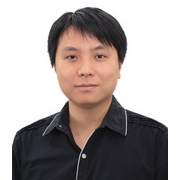Advances and Applications of Liquid Electrodes
A special issue of Micromachines (ISSN 2072-666X). This special issue belongs to the section "C:Chemistry".
Deadline for manuscript submissions: closed (30 April 2023) | Viewed by 1718
Special Issue Editors
Interests: microfluidic; lab-on-chip devices; electrophoresis
Special Issues, Collections and Topics in MDPI journals
Interests: (bio)colloid transport and fate in aquatic systems; on-chip bio-sensing device; wastewater process modeling; data driven approach
Special Issue Information
Dear Colleagues,
Electrodes play an important role in electrical microdevices. How to fabricate precise and suitable electrodes in microdevices are always decisive for the realization of the functions. Compared with solid electrodes, liquid electrodes have no fixed shape by themselves and can be easily injected into microchannels or micro spaces of any shape to complete a variety of functions. At present, liquid electrodes have attracted more and more attention and play a very important role in many fields such as microsensors, micro pumps, fuel cells, wearable/flexible devices, etc. Many materials, such as ionic liquids, liquid metals, and conductive solutions, have been extensively studied as alternatives to conventional solid electrodes and found unique applications in these research fields. Accordingly, this Special Issue seeks to showcase research papers, short communications, and review articles that focus on novel research or applications of any liquid electrodes.
Prof. Dr. Lin Gui
Dr. Chao Jin
Guest Editors
Manuscript Submission Information
Manuscripts should be submitted online at www.mdpi.com by registering and logging in to this website. Once you are registered, click here to go to the submission form. Manuscripts can be submitted until the deadline. All submissions that pass pre-check are peer-reviewed. Accepted papers will be published continuously in the journal (as soon as accepted) and will be listed together on the special issue website. Research articles, review articles as well as short communications are invited. For planned papers, a title and short abstract (about 100 words) can be sent to the Editorial Office for announcement on this website.
Submitted manuscripts should not have been published previously, nor be under consideration for publication elsewhere (except conference proceedings papers). All manuscripts are thoroughly refereed through a single-blind peer-review process. A guide for authors and other relevant information for submission of manuscripts is available on the Instructions for Authors page. Micromachines is an international peer-reviewed open access monthly journal published by MDPI.
Please visit the Instructions for Authors page before submitting a manuscript. The Article Processing Charge (APC) for publication in this open access journal is 2600 CHF (Swiss Francs). Submitted papers should be well formatted and use good English. Authors may use MDPI's English editing service prior to publication or during author revisions.
Keywords
- liquid electrodes
- liquid metal
- 3D electrodes
- micro devices
- micro sensors







